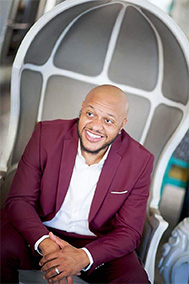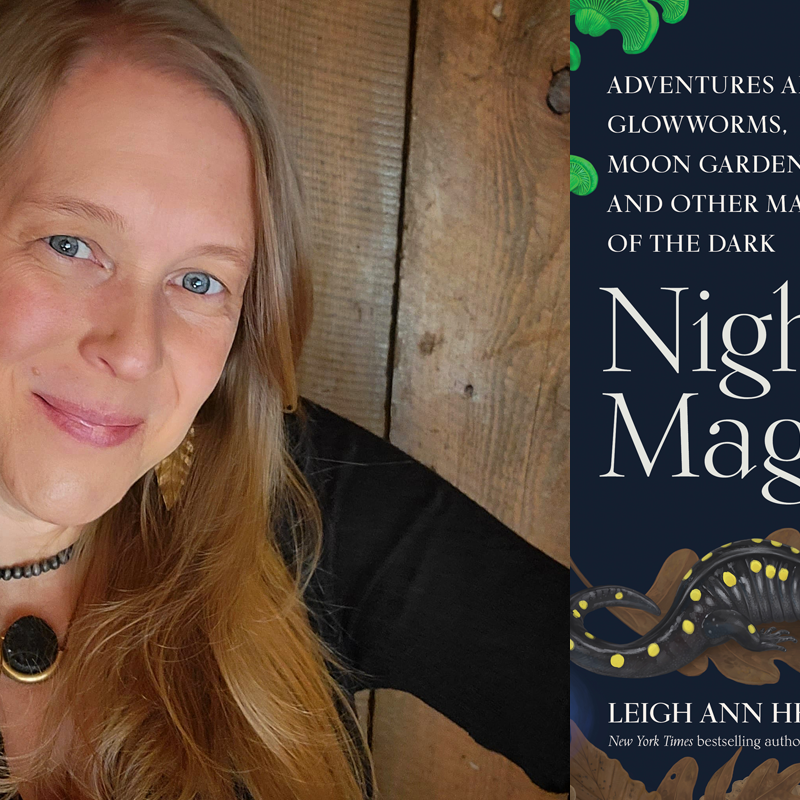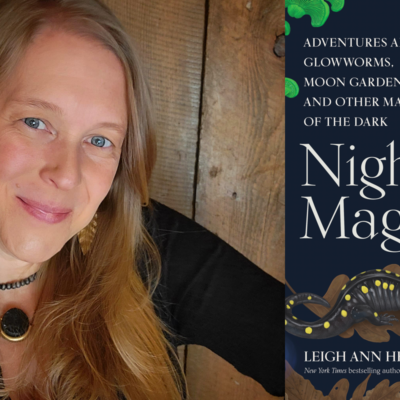From the moment it opened on October 11, 1975, the McGuffey Art Center was a hit. Half a century later, the vibrant arts organization is still humming along, providing affordable studio space and a supportive environment for artists while delivering art shows, receptions, classes, open studios, and performances to the public.
When William H. McGuffey Primary School closed for good in May 1974, it was a blow to a downtown already in decline. Suburban malls had been drawing people away from the city’s center since 1959, when Barracks Road Shopping Center opened.
McGuffey School had occupied a position of prominence in Charlottesville since 1916. Designed by Ferguson, Carlow and Taylor, the architects of UVA’s Peabody Hall, the colonial revival structure was named for UVA professor William Holmes McGuffey, who together with his brother produced McGuffey Readers—popular primers used to teach reading skills throughout the American public school system from the mid-19th century into the 20th century.
The building’s fate following the school’s closure was a major concern for residents of North Downtown, an area that included a high concentration of artists, architects, lawyers, and city planners. When City Council approved a plan to convert eight blocks of East Main Street into a pedestrian mall in September 1974, the scale and transformational nature of the project suggested a willingness to think big and seek unconventional solutions, qualities that would come into play for McGuffey School.
“What I think is powerful and unique about McGuffey comes and goes,” says McGuffey President Judy McLeod, who joined as the first associate member in November 1975. “When we came in, the whole culture was a co-op initiative. Everything was co-ops. There were babysitting co-ops and food co-ops. We were going to be an artist-run co-op and everyone would work cooperatively towards running McGuffey—it was ‘we’ this and ‘we’ that. Some of the times since, ‘we’ was supplanted by ‘I’.” But nowadays, the I’s have receded and all the McGuffey artists understand they have to be a “we” to survive.
Where the art is
Today, McGuffey has 53 resident members, 133 associate members, and six incubator artists. It is “the city’s art space,” says Operations Manager Bill LeSueur. “It’s a community art space and should reflect the community it is in. The artists here, the audience, both should reflect the community.”
This lively symbiosis is at the heart of MAC’s success, but the organization has something else going for it—the high quality of its art. The center relies on a demanding jurying process when accepting new members, and the affordable rents allow artists to experiment and grow in a noncommercial environment. It’s a tremendous achievement on the part of generations of McGuffey artists, City Council, engaged neighbors, and the wider Charlottesville community.
In May 1975, Lucius Bracey—who founded the North Downtown Neighborhood Association and was on both the Planning Commission and the Board of Architectural Review—was appointed by City Council to head the McGuffey School site committee.
Bracey’s committee recommended an arts and crafts center at McGuffey because it could take occupancy immediately, provide a new cultural hub for the public, continue the structure’s original educational mission, and preserve the building.
Following City Council’s approval, a contingent from Charlottesville toured the Torpedo Factory, an artists cooperative in Alexandria, Virginia. “Someone had told us there was a precedent,” says artist Theo van Groll, “so, we went there to see what was possible.”
Word spread quickly. Artists signed on, organizational meetings were held, and the arts association began to take shape. The city oversaw exterior and infrastructure repairs, while artists worked inside. “Basically we came in and cleaned the building, swept the debris in the hallways, and painted,” says founding member McCrea Kudravetz. “It was hot and grungy—I hate to think of all the lead paint, and goodness knows what else we were scraping off the walls.”
Before McGuffey opened, artists worked in makeshift studios scattered around town. “We were all working in our basements,” says Jeanne van Gemert, part of the founding group. “Or in our attics—whatever place we could find. To have a dedicated space, filled with that kind of energy—well, I think you can see it in that first group photograph.”
In addition to its 23 classrooms, the building came with plenty of room for a gallery—a huge coup for artists eager to show their work. The things that made a successful school building—excellent natural light, high ceilings, space—are the things that make it ideal for artists’ studios. Founding member Anne Slaughter recalls that van Groll, whose expertise came into play in the exhibition space, installed spotlights and hundreds of hooks in the ceiling for suspending artwork.
And when all those artists took up residence, something magical happened: A creative force far more powerful than what existed before emerged, supercharging Charlottesville’s art scene, which until that point included Second Street Gallery and Current Scene, a gallery opened in 1969 by City Councilor Jill Rinehart.
Not only did the creative community benefit from the concentration of art and artists at McGuffey, but for the first time it was easy for the public to engage with art and artists. The art center was injecting life back into a moribund town center.
“Artists are like goats,” says Ros Casey, a renting member at McGuffey for 30 years. “You send them into the underbrush and let them chew it all up, so that somebody can come along and build a house. Basically that’s what artists have always done, they go into under-appreciated areas and open an art gallery and the next thing you know, everybody wants to go there.”
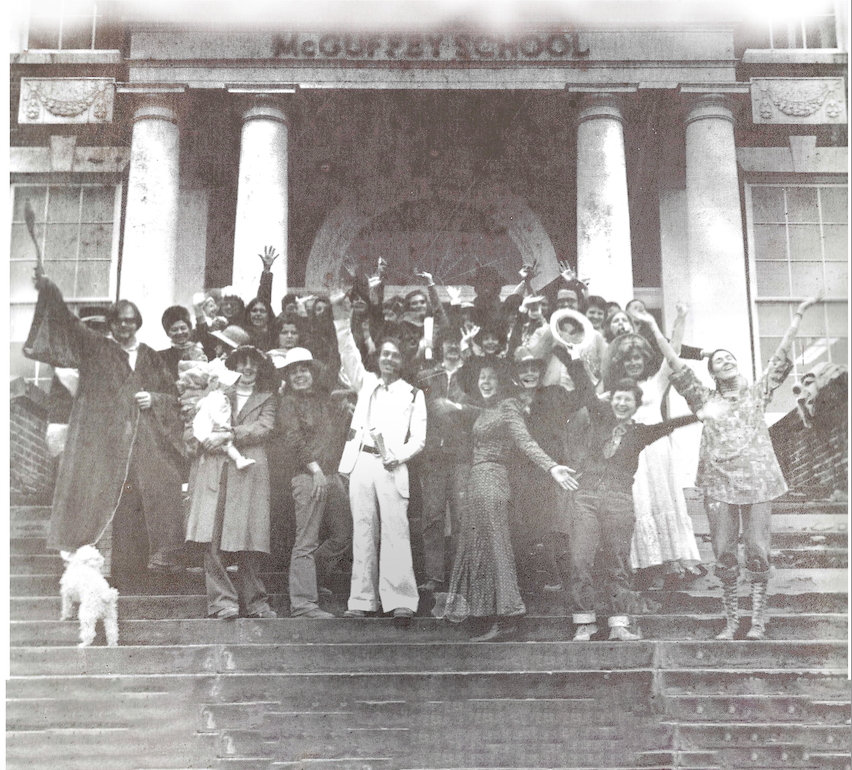
Energy exchange
The collective community spirit of the 1960s still prevailed when McGuffey was being formed and it still infuses its very fabric. McGuffey Art Center is a not-for-profit association, and receives no financial support from the city. Each member contributes by serving on committees, or as an elected officer. These efforts are augmented by a part-time operations manager who oversees the building, which is city-owned. Resident artists pay rent, plus a 15 percent commission to the association, based on square footage, and the association pays the city.
“Very few members make their living from McGuffey and there’s no pressure to sell,” says McLeod. “We’re open to the public, and all renting members are expected to do tours and outreach into the community or schools—that’s a requirement. You can’t just come in here and close your door.” In fact, member artists must leave their doors open, and be willing to interact with the public, for a minimum of 16 hours each week.
At the art center, the emphasis is on doing and teaching. Artists work in close proximity, supporting each other, sharing ideas, techniques, and experience.
“Being at McGuffey propelled people’s work forward,” says van Gemert. “We were totally willing to help each other. There was a consolidation of resources. I remember three or four of us built a kiln together in the parking lot.”
Slaughter agrees. “There’s an exchange of energy between artists, whether you’re aware of it or not—there just is,” she says.
McGuffey’s First Friday openings started to lure people downtown, and things began to change. In March 1976, Phil Stafford and Sandy McAdams opened the C&O Restaurant. Memory & Company Restaurant, which began in 1976 as a cooking school, also opened a highly esteemed eatery. Miller’s followed in 1981.The Omni Hotel opened its doors in 1985, Fridays After Five started in 1987, Live Arts was founded in 1989, the same year SNL Financial moved onto the Mall, and Metropolitain—Vincent Derquenne and Tim Burgess’s haute cuisine precursor to Bizou—joined the scene in 1991.
There have been some changes to the art center along the way, including an electrical fire which caused $100,000 in damage and closed the building temporarily, and in the mid-’90s major renovations forced everyone out of the building for several months. A positive turn came in 1984 when Second Street Gallery, founded in 1973, moved into McGuffey in an effort to gain better accessibility, and remained there for 19 years.
The City of Charlottesville, which had the vision and imagination to see the potential of an arts and crafts center and the will to continue to support it, is to be commended.
City-owned, artist-run organizations like McGuffey are exceedingly rare. Plenty get started but they tend to fizzle out over time. In 1996, when she was president of McGuffey, Casey attended a conference of similar art organizations from across the U.S. and Canada. “They’d all had a certain longevity, averaging about 10 years, and then were being asked to either modify, or go away,” she says. “I’m thinking to myself—we have something really unusual here because we have city buy-in. So many of the other organizations didn’t have that. I came away feeling that if we played our cards right, we could hold onto this place, but we had to stick to our guns—stick to who we really were, and do that well.”
The concentration of artists, working in various disciplines, creates an inspiring environment that encourages creative growth.
For five decades McGuffey has remained true to its core values of providing professional space for artists while presenting exceptional art experiences to the public.
Member spotlight
There are two levels of McGuffey Art Center membership. Resident members are local artists who want studio space and will undertake cooperative duties, such as serving on committees or in elected offices. Associate members can live anywhere and do not have studios, but these artists are allowed to participate in solo and group exhibitions. In addition, McGuffey’s Incubator Program, established in 2015, provides emerging artists with a way into McGuffey, where turnover is low. Immersion in the supportive McGuffey ecosystem benefits not just the incubator artists, but the organization as well, expanding its inclusivity and infusing it with vitality.—SS, with CM Turner
Rosamond Casey
Interdisciplinary artist Rosamond Casey moved to Charlottesville from Washington, D.C., in 1981, and took a studio at MAC, remaining there until 2015, when she built a studio at her home. She describes the center as “a place that nurtures both the public and private selves of artists.” Casey, who ran a graphic arts and calligraphy business out of her studio at MAC, says, “I could not have asked for a richer community and a more supportive environment over those years.”
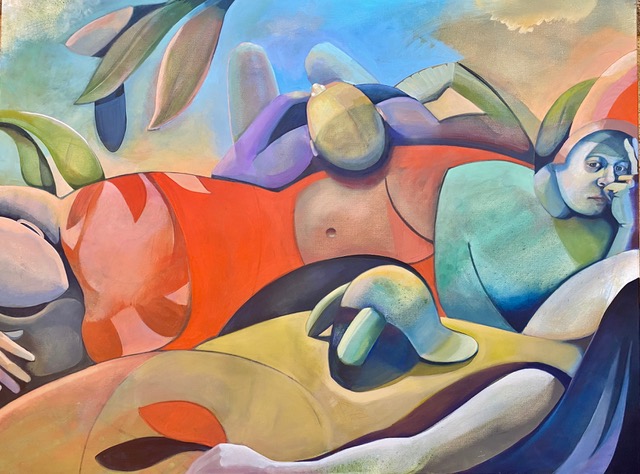
Somé Louis
Interdisciplinary artist Somé Louis became a member at MAC in 2023 after participating in the center’s residency and incubator programs. She says McGuffey is a “very active artist community, with members working across all media, who share an interest in being a part of a larger network and community.” Louis says she’s seen “many examples of ‘community’ and investment in the arts” during her time there.
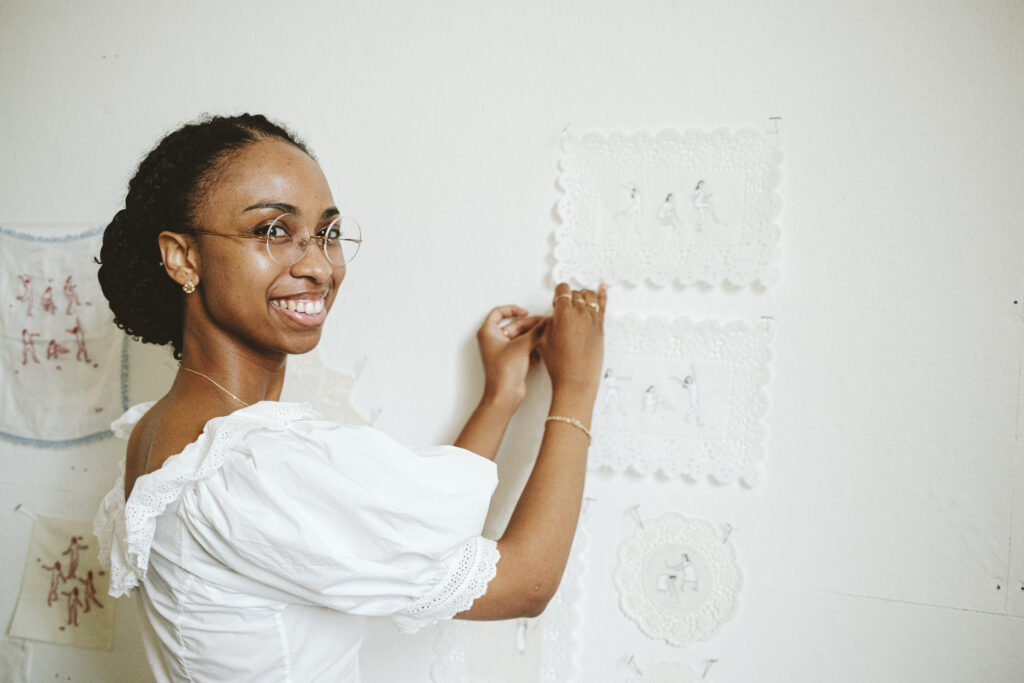
Judy McLeod
Artist and educator, and current McGuffey president, Judy McLeod joined MAC in 1975, and remains a member today. Over the course of 50 years, McLeod has witnessed McGuffey grow from “a gaggle of hippies and crafters and hope-to-be artists” to a professional association with an operations manager and community outreach efforts.
“As a young woman artist I learned from the community, as a working resident artist I learned the operational parts of an association,
and as a mature resident artist I am enjoying making art and spreading knowledge as to how to be ‘McGuffey Art Center,’” she says.
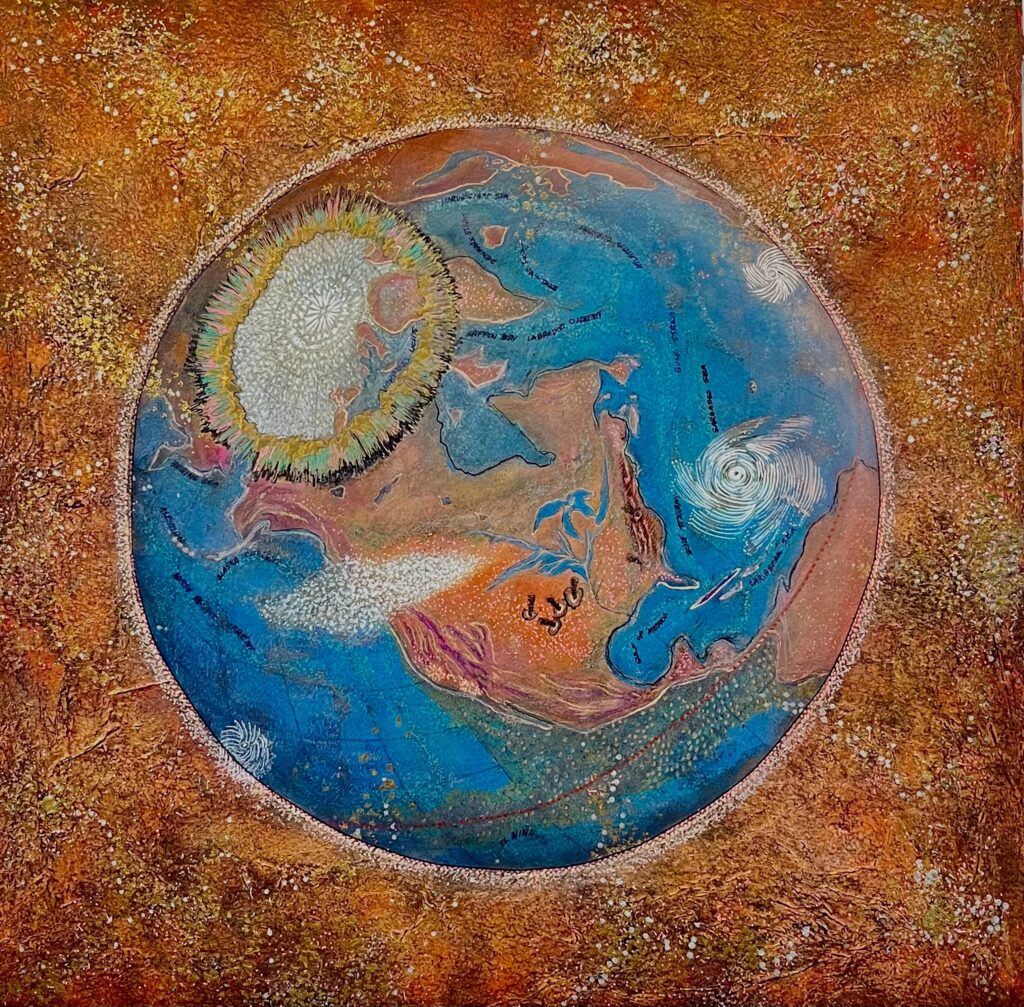
Viesturs “Vee” Osvalds
Stained glass artist Viesturs “Vee” Osvalds became a member at MAC in 1981, and relinquished his studio earlier this year. Now an associate member, Osvalds participates in group shows, and makes items for the gift shop now that he’s no longer accepting commissions. Of the many lessons he learned over his years at MAC, he offers an obvious one: “Give your opinion only when asked, especially regarding someone else’s art work.”
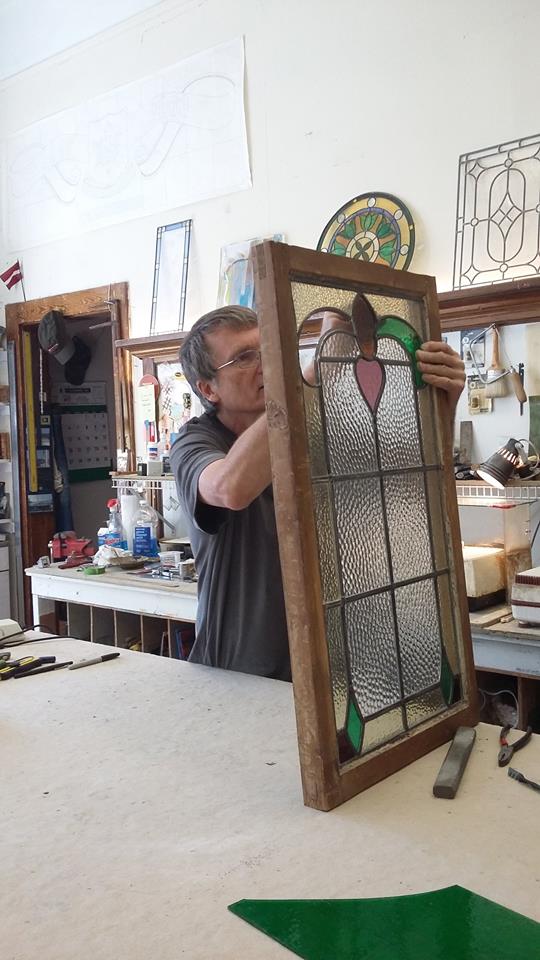
Jeanne van Gemert
Sculptor Jeanne van Gemert became a founding member of McGuffey following a move to Charlottesville from Syracuse, New York, in 1975. She worked at the center molding clay and cold-forged lightweight steel and sheet aluminum for a decade before returning to school to pursue an additional degree in counseling psychology and the expressive arts. “I thrived as an artist at McGuffey,” she says. “McGuffey Art Center was a gift of great collaboration, great community, and inspiration.”
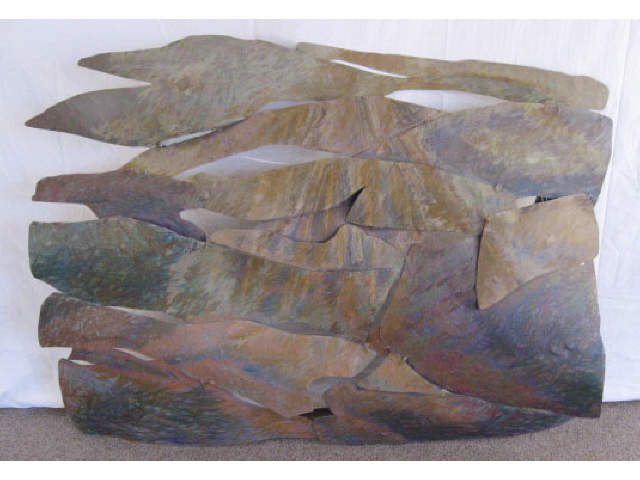
Up close and personal
In honor of its 50th Anniversary, McGuffey Art Center’s September show is a silent auction featuring the work of all 53 resident members and about 40 associate members.
Painting, drawing, photography, printmaking, fiber, sculpture, mixed media, stained glass, and woodworking are all represented in the auction. Patrons can even bid on a private dance performance. In addition to the art auction, the evening features live music and catered fare.
Bidding takes place at the First Friday opening on September 5, from 5 to 8pm. The show is not cash and carry—all works will remain in place until the exhibition comes down on September 28. All proceeds will support McGuffey’s ongoing programs and operations.
Preview the show online or see the show in person at McGuffey Art Center beginning on September 2. mcguffeyartcenter.com

